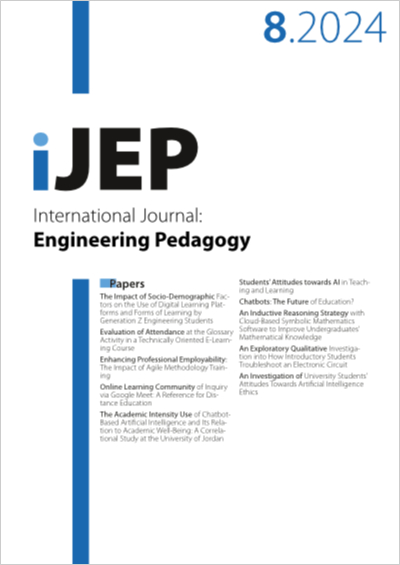An Exploratory Qualitative Investigation into How Introductory Students Troubleshoot an Electronic Circuit
DOI:
https://doi.org/10.3991/ijep.v14i8.48319Keywords:
troubleshooting, electronic circuit, fault-finding, object-orientated focus group, think-aloudAbstract
Troubleshooting is recognised to be a key laboratory learning objective within engineering education. However, little is known about how students taking introductory courses troubleshoot electronic circuits. The contribution of this study, therefore, is to use object-orientated focus groups with a think-aloud protocol to gather data while participants engage in the task of troubleshooting an electronic circuit. Content analysis was used to qualitatively analyse the gathered data based on a previously established cognitive task analysis (CTA) model. The findings, while limited by the sample size, indicate that participants tended to dive straight into the troubleshooting activity, and their troubleshooting process was mostly characterised by two phases of the CTA model, namely test along with repair and evaluate. Earlier phases of the process that involve specific actions, such as discerning the function of parts of the system, brainstorming causes and solutions, and developing a troubleshooting plan, received less attention. The primary implication is that formal troubleshooting instruction may need to be better embedded within introductory courses, though additional research is needed to validate this implication.
Downloads
Published
How to Cite
Issue
Section
License
Copyright (c) 2024 Mr. Pádraig Herbert, Dr. Tom O'Mahony

This work is licensed under a Creative Commons Attribution 4.0 International License.



